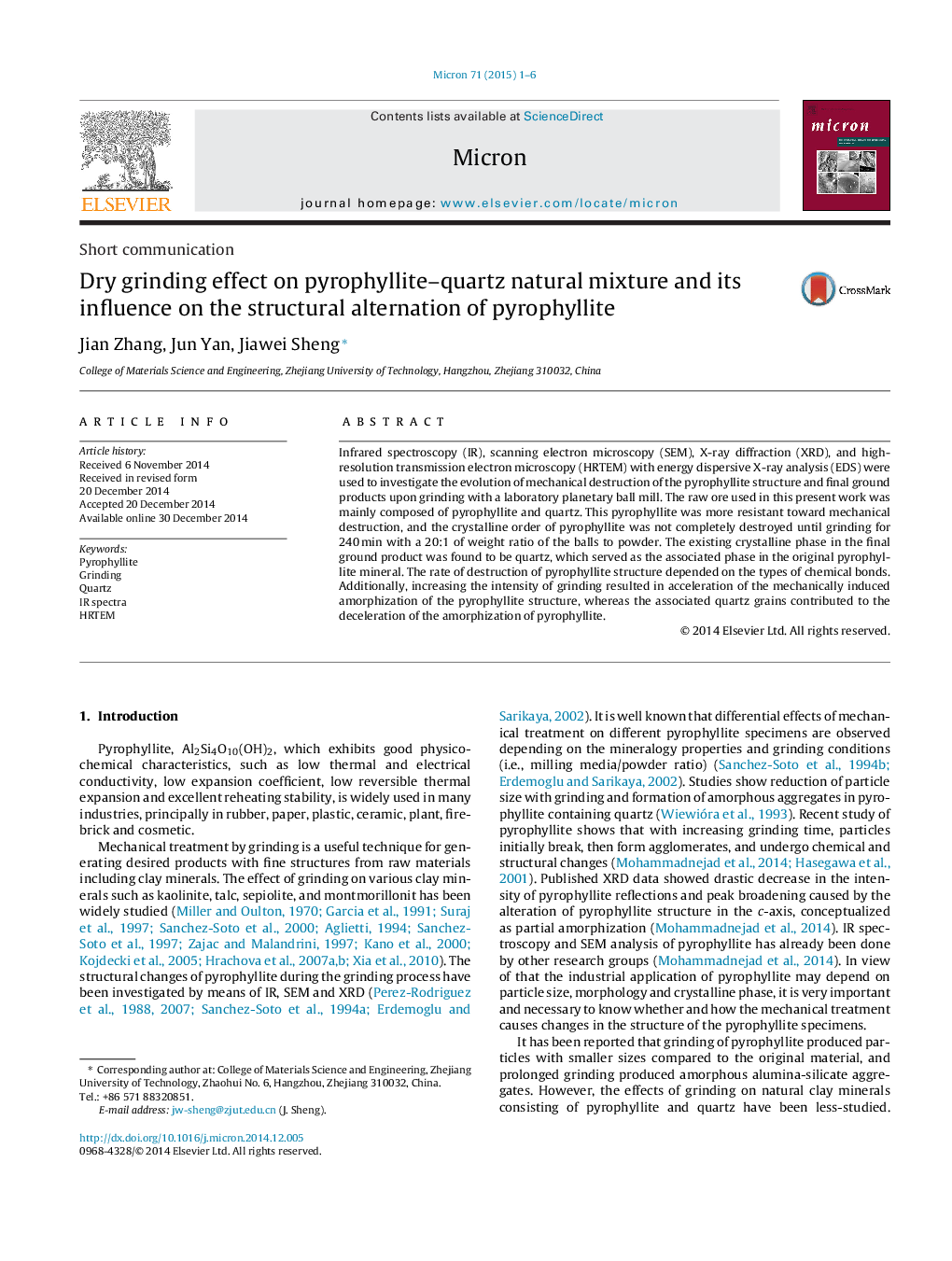| Article ID | Journal | Published Year | Pages | File Type |
|---|---|---|---|---|
| 1588913 | Micron | 2015 | 6 Pages |
Abstract
Infrared spectroscopy (IR), scanning electron microscopy (SEM), X-ray diffraction (XRD), and high-resolution transmission electron microscopy (HRTEM) with energy dispersive X-ray analysis (EDS) were used to investigate the evolution of mechanical destruction of the pyrophyllite structure and final ground products upon grinding with a laboratory planetary ball mill. The raw ore used in this present work was mainly composed of pyrophyllite and quartz. This pyrophyllite was more resistant toward mechanical destruction, and the crystalline order of pyrophyllite was not completely destroyed until grinding for 240Â min with a 20:1 of weight ratio of the balls to powder. The existing crystalline phase in the final ground product was found to be quartz, which served as the associated phase in the original pyrophyllite mineral. The rate of destruction of pyrophyllite structure depended on the types of chemical bonds. Additionally, increasing the intensity of grinding resulted in acceleration of the mechanically induced amorphization of the pyrophyllite structure, whereas the associated quartz grains contributed to the deceleration of the amorphization of pyrophyllite.
Related Topics
Physical Sciences and Engineering
Materials Science
Materials Science (General)
Authors
Jian Zhang, Jun Yan, Jiawei Sheng,
